#Berberidaceae
Photo

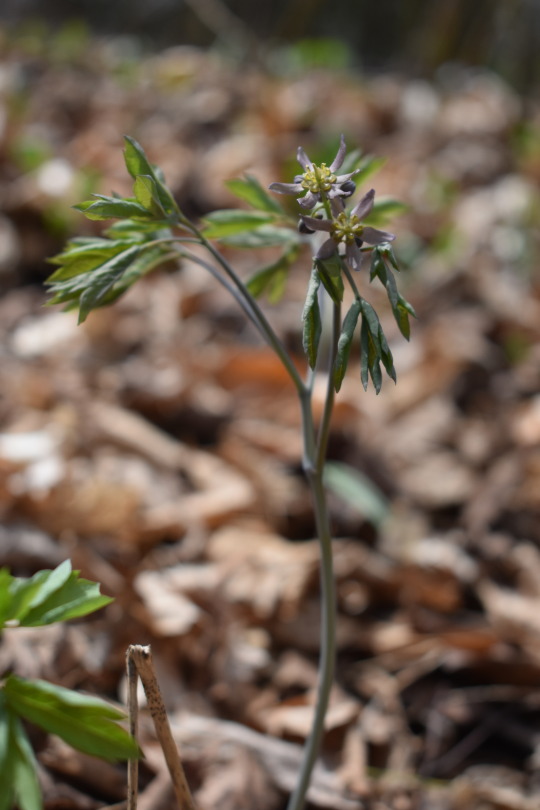
Early Blue Cohosh
Caulophyllum giganteum
Berberidaceae
Photographs taken on April 15, 2023, at Starkey Hill, Ontario, Canada.
#wildflowers of southern ontario#blue#purple#Early Blue Cohosh#cohosh#Caulophyllum giganteum#Caulophyllum#Berberidaceae#Starkey Hill#Ontario#Canada#wildflowers#wildflower#flora
20 notes
·
View notes
Text


N – Nandina domestica Thunb. – Nandina (Berberidaceae)
15 notes
·
View notes
Photo
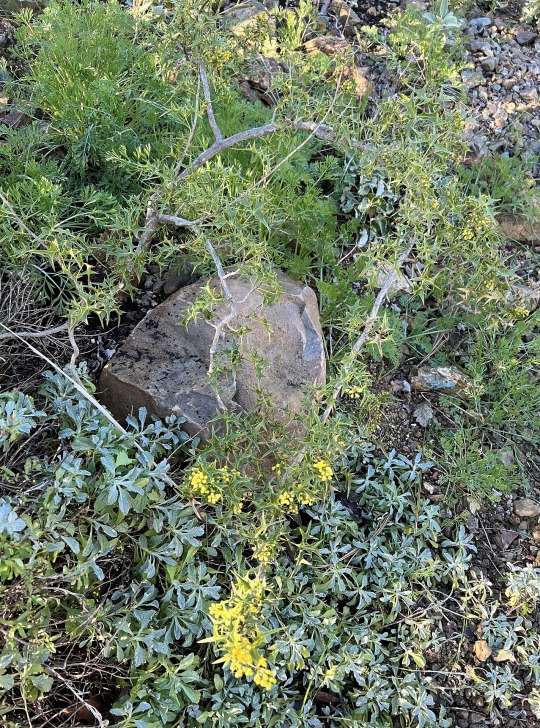
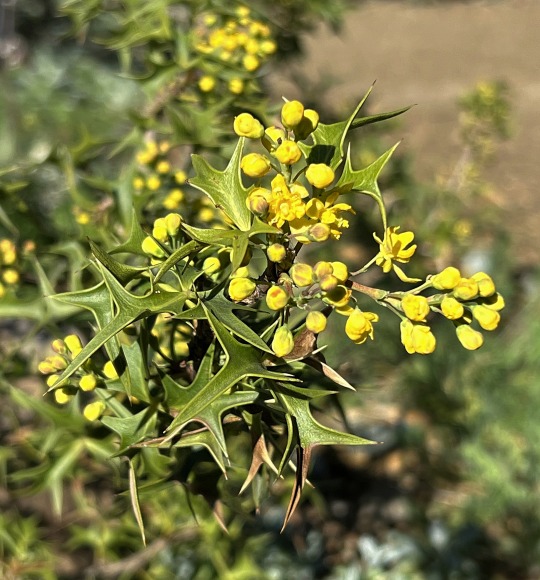
Mahonia harrisoniana
Mahonia is a northern-hemisphere genus in the family Berberidaceae, and its species typically have prickly leaves as can be seen in the plant pictured. Some classifiers prefer to include all the species in Mahonia within an expanded concept of Berberis, so Berberis harrisoniana is an alternative name for this plant. It is a very rare plant, native to the valley of the lower Colorado River, along the border between Arizona and California. Most of the plants known are from the Arizona side, but this one is a propagation of a very rare California plant. We received it in 2022, and we are very happy to see it adjusting nicely and producing flowers - a first for us!
-Brian
18 notes
·
View notes
Text


5/12/22
#may apple#poisonous plant#edible plant#flowering plant#plant#monotypic#Podophyllum peltatum#Ranunculales#Berberidaceae
1 note
·
View note
Text
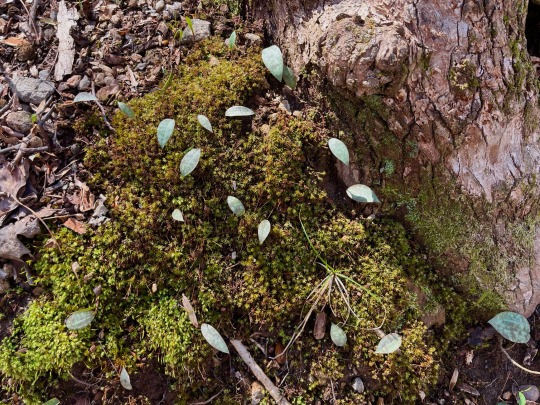
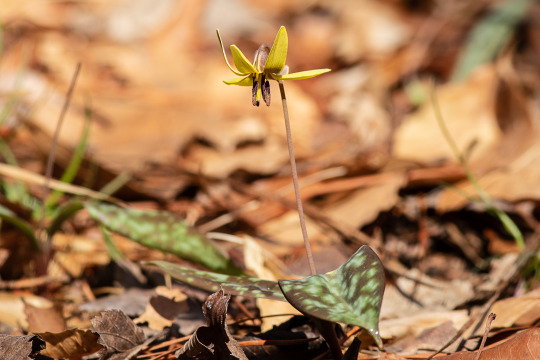
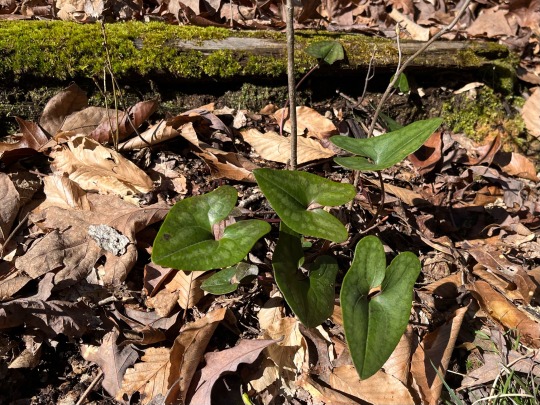
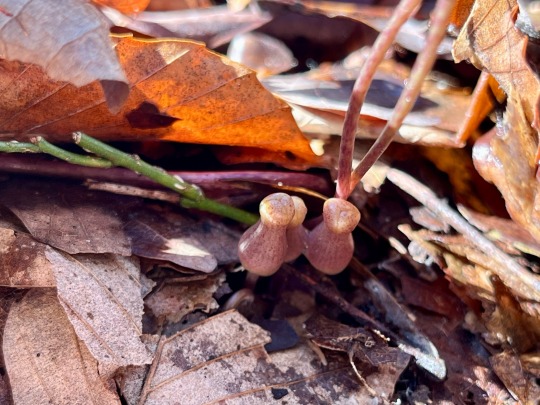

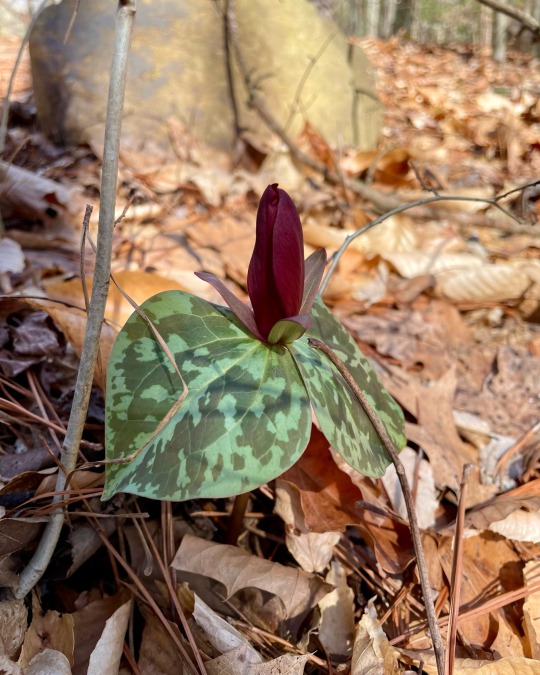
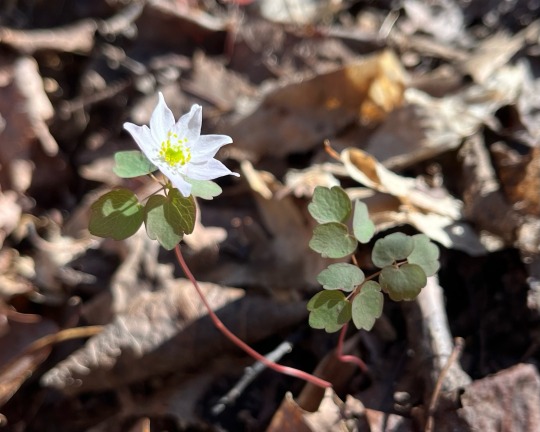
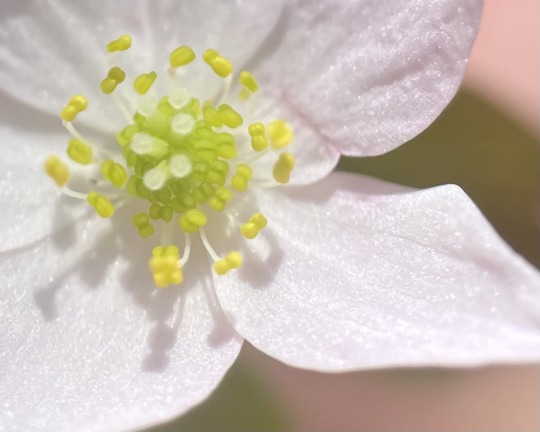


It’s been a while since we’ve gotten out. Too long a while. By row:
(Yellow) Trout lily (Erythronium americanum, Liliaceae)
Little brown jug (Hexastylis arifolia, Aristolochiaceae)
Bloody butcher (Trillium cuneatum, Melanthiaceae)
Rue anemone (Thalictrum thalictroides, Ranunculaceae)
Mayapple (Podophyllum peltatum, Berberidaceae)
These are all a week old, and the trout lilies are already (almost) all bloomless — they ain’t called ephemerals for nothing. I am absolutely thrilled for the return to bloom of our local Hexastylis offerings, and the trilliums are of course a favorite too. An excellent month for mottled leaves.
Many thanks to @krieper for the use of her photos in rows 1, 3, and 5. Much credit also to these deciduously wooded hillsides, which have previously given us some beeches and their drops.
147 notes
·
View notes
Text

skeleton flowers are a species of perennial plant in the family berberidaceae.
70 notes
·
View notes
Video
Epimedium alpinum by Giuliano Da Zanche
Via Flickr:
Epimedium alpinum (Berberidaceae) 092 22 Epimedium alpinum is the type species of the genus Epimedium which contains approximately 69 to 83 species and belongs to the family of the Berberidaceae (Barberry Family). Epimedium alpinum is native to Italy, Austria, Slovenia, Croatia, Bosnia-Herzegovina, Yugoslavia (Serbia, Montenegro), and Albania and is naturalized in France, Germany, Danmark, and the British Isles. The perennials have a clump-forming habit and reach heights of 15 to 30 centimeters. Epimedium alpinum produces racemes of yellow cruciform flowers from March to May. Source Hortipedia.
2 notes
·
View notes
Text
Next up is Mahonia nervosa, in the BERBERIDACEAE family! This guy is commonly known as dull Oregon grape.
This shrub has alternating pinnately compound leaves with 9-19 leaflets per leaf. The leaflets are relatively dull on their surface, and feature front-facing spines on their margins. Its flowers are yellow in color and occur in clusters on short stalks. It produces dark purple berries.
Mahonia nervosa is native to Western North America. It does well in low nutrient soils, and is tolerant of both shade and drought. It is able to reproduce vegetatively through rhizomes, allowing it to recover from fire or other disturbances. It is pollinated by insects and its seeds are dispersed by animals eating its fruit.



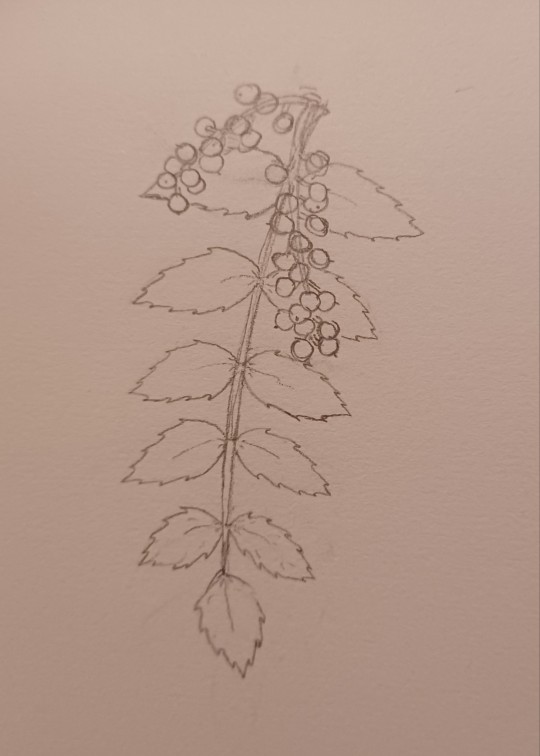
0 notes
Text
Blue Cohosh (Caulophyllum thalictroides (L.) Michx.)
Berberidaceae (Barberry Family)
Synonym(s): Blue Cohosh, Squaw-root, Papoose-root, Caulophylle Faux-pigamon
Base Flower Color: Brown (incl. Maroon) (incl. Maroon)Reproductive Phenology: Apr, May
For more information about this plant, Click Here.

View On WordPress
0 notes
Text
Exploring the Health Benefits and Uses of Berberis Vulgaris
Berberis vulgaris, commonly known as barberry, is a shrub that has been revered for centuries for its medicinal properties. Belonging to the Berberidaceae family, this plant is native to Europe, North Africa, and Western Asia. In traditional medicine systems like Ayurveda and herbalism, various parts of the Berberis vulgaris plant, including the bark, roots, and berries, have been utilized for their therapeutic benefits. In this comprehensive overview, we delve into the health benefits, uses, and potential side effects of Berberis vulgaris.
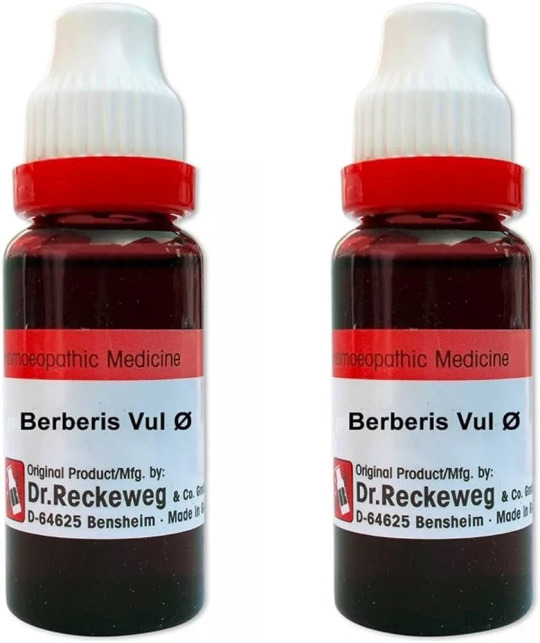
Health Benefits of Berberis Vulgaris:
1. Anti-inflammatory Properties:
Berberis vulgaris contains compounds such as berberine, which exhibit potent anti-inflammatory effects. These properties make it valuable in the treatment of inflammatory conditions like arthritis, where it may help alleviate pain and reduce swelling.
2. Antimicrobial Activity:
Berberine, a key component of Berberis vulgaris, possesses broad-spectrum antimicrobial properties. It has been shown to inhibit the growth of various bacteria, fungi, and protozoa, making it useful in combating infections. Berberis vulgaris extracts may be applied topically to treat skin infections or taken internally to address gastrointestinal infections.
3. Digestive Health Support:
In traditional medicine, Berberis vulgaris has been used to promote digestive health and alleviate gastrointestinal discomfort. It is believed to stimulate bile secretion, which aids in digestion and may help relieve symptoms of indigestion, bloating, and constipation.
4. Antioxidant Effects:
Berberis vulgaris is rich in antioxidants, which help neutralize harmful free radicals in the body. By scavenging these free radicals, antioxidants protect cells from oxidative damage and reduce the risk of chronic diseases such as cardiovascular disease, cancer, and neurodegenerative disorders.
5. Management of Metabolic Conditions:
Berberine, found abundantly in Berberis vulgaris, has shown promise in managing various metabolic conditions, including diabetes and obesity. Studies suggest that berberine may improve insulin sensitivity, regulate blood sugar levels, and promote weight loss, making it a valuable adjunct to conventional therapies for these conditions.
Uses of Berberis Vulgaris:
1. Herbal Medicine:
In traditional herbal medicine systems, various parts of the Berberis vulgaris plant are used to prepare decoctions, tinctures, and herbal remedies. These preparations are employed to treat a wide range of ailments, including digestive disorders, skin conditions, urinary tract infections, and liver disorders.
2. Culinary Purposes:
Berberis vulgaris berries have a tart and tangy flavor, reminiscent of cranberries. They are often used in culinary applications, such as jams, jellies, sauces, and beverages. In Middle Eastern cuisine, dried barberries are a popular ingredient in savory dishes, adding a unique flavor and vibrant color.
3. Ornamental Plant:
Beyond its medicinal and culinary uses, Berberis vulgaris is also valued as an ornamental plant in gardens and landscapes. Its vibrant foliage, colorful berries, and tolerance to various growing conditions make it a popular choice for hedges, borders, and ornamental plantings.
4. Natural Dye:
The roots and bark of Berberis vulgaris contain pigments that can be used as natural dyes. Historically, these plant materials were employed to produce yellow, gold, and orange hues in textiles, yarns, and fabrics.
Potential Side Effects and Precautions:
While Berberis vulgaris offers numerous health benefits, it is essential to use it with caution and under the guidance of a healthcare professional, particularly in the following scenarios:
Pregnancy and Lactation: Pregnant and breastfeeding women should avoid Berberis vulgaris due to its potential uterine stimulant effects.
Drug Interactions: Berberis vulgaris may interact with certain medications, including blood thinners, antidepressants, and medications metabolized by the liver. It is advisable to consult a healthcare provider before using Berberis vulgaris concurrently with other medications.
Allergic Reactions: Individuals with a known allergy to plants in the Berberidaceae family (e.g., Oregon grape, goldenseal) may experience allergic reactions to Berberis vulgaris.
Conclusion:
Berberis vulgaris, with its rich history and diverse array of health benefits, continues to be valued in modern herbal medicine and culinary traditions. From its anti-inflammatory and antimicrobial properties to its potential role in managing metabolic conditions, this versatile plant offers a myriad of therapeutic possibilities. However, it is essential to approach its use with caution and seek professional guidance to ensure its safe and effective incorporation into one's wellness regimen. Read in - Berberis Vulgaris Uses In Hindi
Whether used as a medicinal herb, culinary ingredient, or ornamental plant, Berberis vulgaris stands as a testament to the enduring relationship between humans and the natural world, offering both sustenance and healing for mind, body, and soul.
0 notes
Text
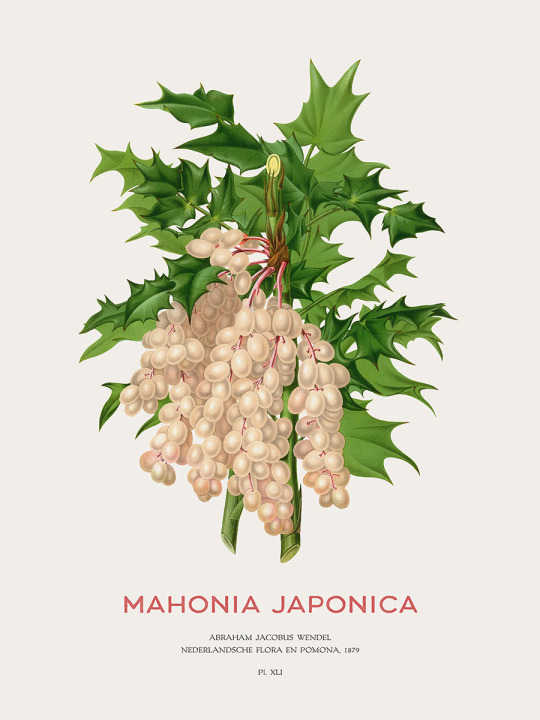
Oregon grape holly or Mahonia japonica
Mahonia japonica is a species of flowering plant in the family Berberidaceae, native to Taiwan. Despite the name, it is not native to Japan, though it has been known in cultivation there for centuries.
Available now on Redbubble
#vintage#redbubble#vintagrafica#nature#educational#biodiversity#cottagecore#botany#botanical#grape#grapes#mahonia#japanese#1800s
0 notes
Text


B - Berberis vulgaris L. - Crespino comune (Berberidaceae)
19 notes
·
View notes
Text
Unveiling the Power of Epimedium Sagittatum Extract: Nature’s Gift for Vitality
In the realm of traditional medicine and herbal remedies, few plants boast a history as rich and storied as Epimedium Sagittatum. Also known as Horny Goat Weed, this herb has been treasured for centuries in various cultures for its purported health benefits. Today, we delve into the world of Epimedium Sagittatum extract, exploring its origins, potential benefits, and the scientific intrigue that surrounds it.
The Roots of Epimedium Sagittatum
A Historical Perspective
Epimedium Sagittatum has deep roots in traditional Chinese medicine, where it earned its intriguing moniker – Horny Goat Weed. Legend has it that the herb’s name originated from the observation of increased sexual activity in goats after consuming it. Fascinated by this phenomenon, ancient herbalists began exploring the potential benefits of Epimedium Sagittatum for human health.
Botanical Profile
Epimedium Sagittatum is a perennial plant belonging to the Berberidaceae family. Native to China and other parts of Asia, it thrives in shady, woodland environments. The plant is characterized by heart-shaped leaves and delicate, orchid-like flowers. However, it’s the leaves and stems that hold the key to its medicinal properties.
Unlocking the Potential: Epimedium Sagittatum Extract
Phytochemical Marvels
The magic lies in the plant’s bioactive compounds, including icariin, flavonoids, and other phytochemicals. Icariin, in particular, is often hailed as the star player in Epimedium Sagittatum, attributed to its potential health benefits.
Boosting Sexual Health
One of the most celebrated aspects of Epimedium Sagittatum extract is its potential role in supporting sexual health. Icariin is believed to enhance blood flow to certain areas, which may contribute to improved erectile function in men and increased libido in both men and women. Scientific studies exploring these effects have fueled interest in the herb as a natural alternative for those seeking support in this area.
Beyond the Bedroom: Other Potential Benefits
While Epimedium Sagittatum is often associated with sexual health, research suggests that its benefits extend beyond the bedroom. Some studies propose that the herb may have antioxidant and anti-inflammatory properties, potentially contributing to overall well-being.
Incorporating Epimedium Sagittatum Extract Into Your Routine
Choosing Quality Supplements
As interest in Epimedium Sagittatum extract grows, so does the availability of supplements. When considering incorporating this herb into your routine, it’s crucial to choose high-quality products from reputable sources. Look for standardized extracts with a defined icariin concentration to ensure consistency and efficacy.
Consultation with Healthcare Professionals
Before adding any new supplement to your regimen, it’s wise to consult with a healthcare professional. They can provide personalized advice based on your health history and potential interactions with medications.
What is icariin
Icariin is a natural compound found in certain plants, most notably in the genus Epimedium, from which it derives its name. Epimedium is commonly known as Horny Goat Weed, and icariin is often considered one of its primary active ingredients. This compound has gained attention due to its potential health benefits, especially in the context of sexual health.
Origins: Icariin is primarily found in plants of the Epimedium genus, including Epimedium Sagittatum. These plants are native to various regions in Asia, and they have a long history of use in traditional Chinese medicine.
Biological Effects: Icariin is classified as a flavonoid and is believed to have various biological effects. It has been studied for its potential antioxidant, anti-inflammatory, and neuroprotective properties.
Sexual Health: One of the most well-known aspects of icariin is its association with sexual health. It is thought to work by increasing blood flow to certain areas of the body, potentially improving erectile function in men and supporting libido in both men and women. Some studies have explored its use as a natural alternative for addressing certain aspects of sexual dysfunction.
Bone Health: There is also some research suggesting that icariin may have positive effects on bone health. It may influence bone metabolism and could be a potential candidate for the development of treatments for conditions like osteoporosis.
Caution and Considerations: While icariin has shown promise in various studies, it’s important to approach it with caution. As with any supplement, individual responses can vary, and potential interactions with medications or underlying health conditions should be considered. Consulting with a healthcare professional before incorporating icariin supplements into one’s routine is advisable.
Standardized Extracts: When seeking icariin supplements, it’s recommended to choose products that provide standardized extracts, indicating a specific concentration of icariin. This ensures consistency and helps in determining the appropriate dosage.
The Verdict on Epimedium Sagittatum
In conclusion, Epimedium Sagittatum extract stands as a testament to the age-old wisdom found in traditional herbal remedies. While more research is needed to fully understand its mechanisms and benefits, the plant’s historical significance and promising studies make it a captivating subject in the world of natural health.
As with any herbal supplement, moderation and informed choices are key. Whether seeking support for sexual health or exploring natural alternatives for overall well-being, Epimedium Sagittatum extract invites us to appreciate the wonders nature has to offer.
Embrace the wisdom of the ancients and consider the potential of Epimedium Sagittatum as a valuable addition to your wellness journey.

Epimedium Sagittatum
0 notes
Text


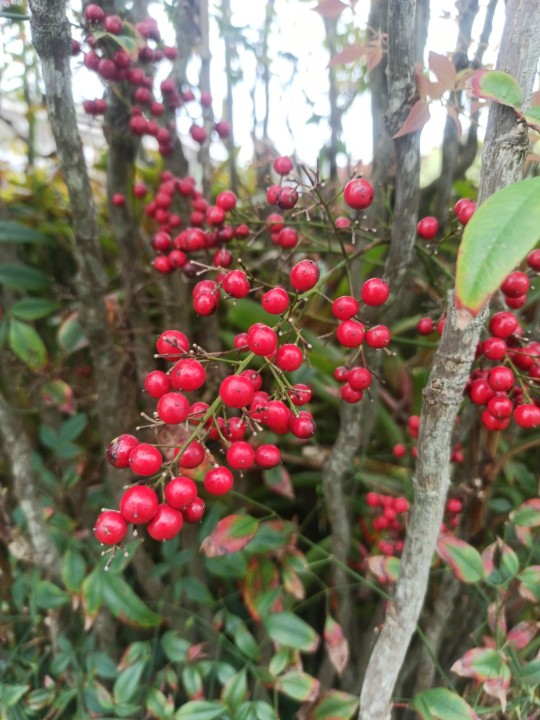
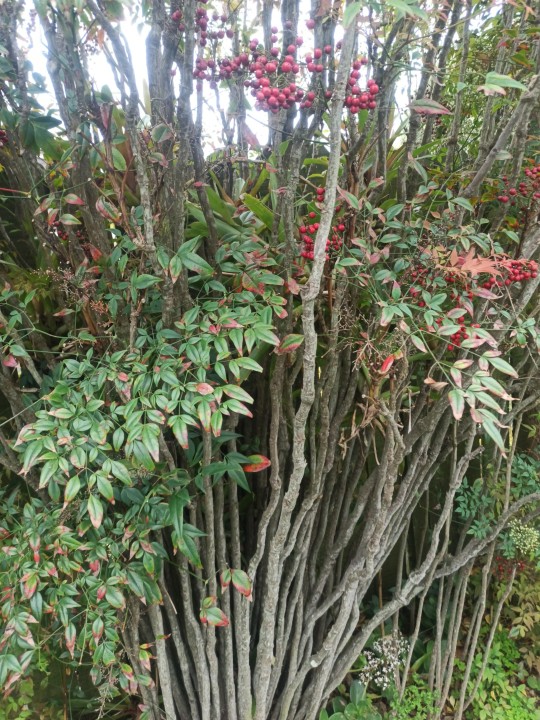

Nandina domestica commonly known as nandina, heavenly bamboo or sacred bamboo, is a species of flowering plant in the family Berberidaceae, native to eastern Asia from the Himalayas to Japan. It is the only member of the monotypic genus
Clade:Eudicots
Order:Ranunculales
Family:Berberidaceae
Genus:Nandina
The Latin genus name Nandina is derived from the Japanese name nanten (南天). The specific epithet domestica means 'domesticated', or 'of the household'.
N. domestica, grown in Chinese and Japanese gardens for centuries. Nandina is extremely toxic to birds and animals.
Корни и стебли обладают противокашлевым, вяжущим, жаропонижающим, желудочным и тонизирующим действием. Отвар применяют при лечении лихорадки при гриппе, остром бронхите, коклюше, расстройстве пищеварения, остром гастроэнтерите, абсцессе зуба, болях в костях и мышцах, травматических повреждениях.
Нандина — монотипный род цветковых растений семейства Барбарисовые.
53-45 Anzac Road, Browns Bay, Auckland 0630
7PMV+8M7 Auckland
-36.7167030, 174.7441780
наземные растения, цветковые, вечнозелёные деревья
0 notes
Text

Berberin | Nguồn kháng sinh tự nhiên quý giá
Berberin hydroclorid là hoạt chất được chiết từ cây hoàng đằng (còn có tên là vàng đắng, hoàng liên…, tên khoa học là Coptis teeta), là một chế phẩm hoàn toàn từ thiên nhiên và tuyệt đối an toàn, không tồn dư trong vật nuôi như các loại thuốc kháng sinh trên thị trường hiện nay.
Hoạt chất này được sử dụng như một loại kháng sinh từ thiên nhiên, kháng sinh thực vật hiệu quả và an toàn trong phòng và điều trị bệnh cho các loại vật nuôi như tôm, cá, lợn (heo), gà… đặc biệt ở những trang trại nuôi trồng hữu cơ.
Berberin là hoạt chất rất mạnh trong việc phòng và hỗ trợ điều trị các bệnh liên quan đến tiêu hóa. Nhưng vì sao lại nói Berberin là nguồn kháng sinh tự nhiên quý giá. Cùng Thiên Tuế tìm hiểu nhé.
1. Berberin là nguyên liệu gì?
Berberin nguyên liệu là một alkaloid isoquinoline tự nhiên được phân lập từ nhiều loài cây thuốc tại Việt Nam như Vàng đắng, Hoàng bá, các loại Hoàng liên: Hoàng liên chân gà, Hoàng liên gai, Hoàng liên ô rô…
Berberin đã được sử dụng rộng rãi trong y học cổ truyền, thường được dùng nhiều để trị các bệnh đường ruột: viêm đại tràng, lỵ; bệnh gan mật: viêm gan vàng da; đau mắt do viêm màng kết mạc; bệnh ngoài da: viêm tai chảy mủ, nước ăn chân, ngứa do nấm…
Berberin đã thu hút được sự chú ý trong những năm gần đây do hợp chất này sở hữu một số tác dụng dược lý như kháng ung thư, kháng virus và kháng khuẩn.
2. Berberin | Con đường từ nguồn kháng sinh thiên nhiên quý giá
Y học phương Đông đã sử dụng một số loại cây thân rễ màu vàng có chứa berberin trong điều trị các bệnh đường ruột từ lâu đời, mặc dù độ tinh khiết và hàm lượng của berberin khác nhau giữa các cây này, tuy nhiên chúng đã được sử dụng trong y học Trung Quốc và Ayurvedic khoảng 3000 trước Công nguyên.
Còn ở Việt Nam, berberin bắt đầu được biết đến và được sử dụng rộng rãi bắt nguồn từ “Dịch lỵ nguy hiểm những năm đầu thập kỷ 70 của thế kỷ 20”, khi đó người dân Việt Nam phải gánh chịu hậu quả của dịch lỵ nguy hiểm lan nhanh ở các tỉnh đồng bằng, miền núi, nhiều bệnh nhân bị tiêu chảy liên tục đến kiệt sức rồi tử vong.
Đầu năm 1972, lãnh đạo Bộ Y tế và Giáo sư Hồ Đắc Di – Hiệu trưởng trường Đại học Y Hà Nội đã tổ chức họp khẩn cấp các nhà y dược học để bàn biện pháp dập tắt dịch.
Và người được mệnh danh là cha đẻ của berberin ở Việt Nam: Dược sĩ Phan Quốc Kinh – người đã mở ra con đường dập tắt dịch lỵ nguy hiểm ở Miền Bắc từ những năm 70,khi đó mới 35 tuổi đã đứng lên thay mặt cho trường Đại học Dược Hà Nội xin nhận nhiệm vụ này và hứa sẽ cung cấp đủ thuốc cho Bộ sau 6 tháng.
Sau quá trình tìm tòi thu thập các bài thuốc dân gian, chế phẩm có chứa berberin đã được ra đời, Giáo sư Tôn Thất Tùng là người trực tiếp sử dụng berberin cho chính mình và các bệnh nhân ở Bệnh viện Việt Đức để thử tác dụng và kết luận thuốc có hiệu quả tốt.
Báo cáo sử dụng trên lâm sàng ở Việt Nam đã ghi nhận: tác dụng điều trị của berberin thể hiện rõ rệt trong các vụ dập tắt dịch lỵ và tiêu chảy ở Việt Nam vào những năm 1972, 1973.
Berberin đã được xác định có tác dụng điều trị tất cả các trường hợp tiêu chảy nặng, tả, làm giảm tỉ lệ tử vong, giảm thời gian tiêu chảy, giúp chóng lành bệnh.
Với liều đã sử dụng trên một số phương diện, berberin tỏ ra có ưu điểm hơn chloramphenicol như không gây phản ứng phụ và độc tính thấp, mặt khác berberin không ảnh hưởng tới sự phát triển của hệ vi sinh vật đường ruột, có thể phối hợp với một số kháng sinh để hạn chế tác dụng phụ với vi sinh vật đường tiêu hóa.
3. Berberin thường có ở đâu?
Hàng nhiều thế kỷ qua, berberin được biết tới như một chất kháng khuẩn tự nhiên trong điều trị các bệnh lý như tiêu chảy, viêm đường tiêu hóa.
Berberin là alcaloid thường có trong thân, rễ , vỏ cây của các cây thuộc các họ có Berberin, bao gồm: Na (Annonaceae), Hoàng liên (Berberidaceae), Cải cần (Fumariaceae), Tiết dê (Menispermaceae), Thuốc phiện (Papaveraceae), Mao lương (Ranunculaceae), Cam (Rutaceae).
Ở Việt Nam, đã xác định Berberin có nhiều ở các họ: Berberidaceae, Menispermaceae, Ranunculaceae, Rutaceae và Papaveraceae.
Trong đó vàng đắng (một số tên gọi khác là dây đằng giang, hoàng đằng, dây khai, vàng đằng) có tên khoa học Coscinium usitatum Pierre thuộc họ Tiết dê Menispermaceae là loài chứa hàm lượng cao Berberin (một alcaloid chiếm 80% alcaloid toàn phần).
Dạng dược dụng của Berberin thường ở dạng muối: Berberin hydroclorid và Berberin sulfat.
---------
Follow page Thientue Pharma JSC - Bộ phận THỦY SẢN để đón đọc thêm nhiều thông tin hữu ích về ngành nuôi tôm.
Follow page Thientue Pharma JSC - Nguyên liệu dược liệu để đón đọc thêm nhiều thông tin hữu ích về sức khỏe con người.
#ThientuePharmaJSC #duocphamthientue #congtythientue
#aquaculture #thuysan #livestock #channuoi #tpcn #functionalfoods
#Berberin #berberin99 #BerberinHydrochloride99 #cayhoangdang #FibraureaRecisaPierre #FibraureaTinctoriaLour
---------
Thientue Pharma JSC - Hợp Tác Chân Thành
Công Ty Cổ Phần Dược Phẩm Thiên Tuế (Thientue Pharma JSC) chuyên sản xuất và phân phối các loại Cao dược liệu, Chiết xuất thảo dược, Chế phẩm sinh học (men vi sinh, nguyên liệu sinh học) và các hoạt chất nhập khẩu chuyên dụng dành cho thủy sản.
VPĐD: 56/30 Tân Thới Nhất 17, KP4, P. TNT, Q. 12, Tp. HCM 71510
SĐT: 028.6267.7070
MST: 0316454916
Email: [email protected]
Website về nguyên liệu cho thủy sản, thú y và chăn nuôi: thientue.net.vn
Website về nguyên liệu cho dược, thực phẩm chức năng, mỹ phẩm và thực phẩm: nguyenlieuthuoc.com
Thời gian làm việc: 08:00 - 17:00, từ thứ 2 đến thứ 7
Chúc quý khách sức khỏe dồi dào - vạn sự như ý
Chúc vụ mùa thuận lợi - gặt hái thành công
#ThientuePharmaJSC#duocphamthientue#congtythientue#aquaculture#thuysan#livestock#channuoi#tpcn#functionalfoods#Berberin#berberin99#BerberinHydrochloride99#cayhoangdang#FibraureaRecisaPierre#FibraureaTinctoriaLour
0 notes
Text
Daruharidra (Berberis aristata): Useful Part, Benefits & Uses
Daruharidra, scientifically known as Berberis aristata, is a remarkable herb deeply rooted in the ancient tradition of Ayurveda. This botanical wonder has gained recognition not only for its rich history but also for its potent medicinal properties. In this comprehensive guide, we delve into the various aspects of daruharidra, from its chemical composition to its health benefits and safe usage.
What is Daruharidra?
Daruharidra, scientifically known as Berberis aristata, is a perennial shrub belonging to the Berberidaceae family. This herb is native to the Himalayan region. It exhibits a bitter and astringent taste and possesses qualities of lightness and dryness. Known for its heating potency, it stimulates digestion and supports metabolic processes. This herb has wide-ranging health benefits, including digestive aid, immune system support, skin care, blood sugar regulation, and respiratory health. Its versatile applications make it a valuable asset in Ayurvedic remedies.

The Chemical Composition and Useful Parts of Daruharidra
The medicinal power of daruharidra lies in its complex chemical composition. This herb contains a plethora of bioactive compounds, including berberine, palmatine, and magnoflorine. Berberine, in particular, is a star player known for its antimicrobial, anti-inflammatory, and antioxidant properties.
When it comes to utilizing daruharidra, the primary focus is on its root bark. The root bark contains the highest concentration of beneficial compounds and are typically useful in Ayurvedic preparations and herbal remedies.
Qualities of Daruharidra According to Ayurveda
In Ayurveda, the assessment of any substance's therapeutic potential begins with an understanding of its inherent qualities, or "gunas." Daruharidra exhibits a unique combination of qualities that underscore its significance in traditional medicine:
Rasa (Taste): The primary taste of daruharidra is bitter (tikta) and astringent (kashaya), imparting a distinctive and somewhat stringent flavor profile to its root and stem.
Guna (Quality): Daruharidra's predominant qualities encompass lightness (laghu) and dryness (ruksha). These attributes align perfectly with its role as a versatile herb in various Ayurvedic preparations.
Virya (Potency): This remarkable herb possesses a heating potency (ushna virya), which ignites the digestive fire and fosters metabolic processes within the body.
Vipaka (Post-Digestive Effect): Daruharidra's post-digestive effect is pungent (katu), contributing to its ability to harmonize the doshas after digestion, a quality highly esteemed in Ayurveda.
By comprehending these fundamental qualities of daruharidra, we gain insight into its multifaceted nature and the therapeutic benefits it offers within the context of Ayurvedic healing practices. These inherent qualities underscore why daruharidra is such a prized component of Ayurvedic remedies.
read more
#ayurveda#ayurvedicmedicine#ayurvedictreatment#ayurvedic#pure herbs#ayurveda medicine#daruharidra#Berberis aristata
0 notes
